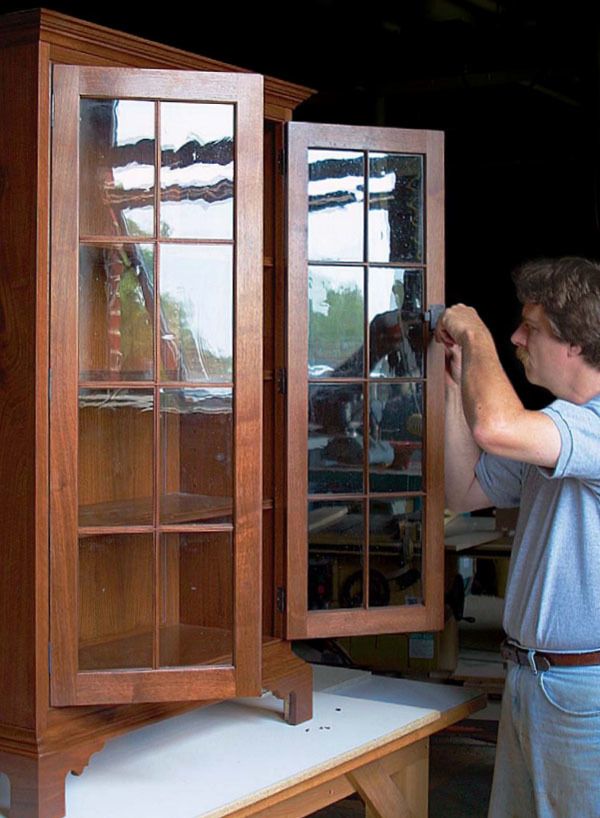Graceful Glass Doors
Delicate muntins require exacting machine work and handwork, but they create doors of elegant proportions
Synopsis: It takes precise machine and hand work to create the elegant glass doors in this bookcase by woodworker Steve Latta, but the results are worth it. The joinery of the frames is standard mortise-and-tenon fare, but each of the delicate muntins is made from two separate pieces of wood, a face piece shaped with a small bead that fits over a lattice grid. These glass doors are ageless and speak to a time when attention to detail meant a little more than it often does today.
From Fine Woodworking #171
A pair of properly executed glass doors adds sophistication to a bookcase, a breakfront or a case-on-chest. The doors on this walnut bookcase that I made for my wife are similar to ones I saw several years ago on an English antique. Most glass doors today are built using cope-and-stick knife sets to shape the muntins. Not so with these doors. Cope-and-stick sets give rise to a heavier, bulky gridwork that is inappropriate for the lighter and more formal look I prefer in my work. My process involves precise machine work and handwork, but for the end result, the extra effort is well worth it.
The joinery for a glass-door frame is standard mortise-and-tenon fare, but there are a few important details to note. Choose straight-grained stock because of its strength and stability. Leave it oversize for several days, and then bring it down to final dimension after it has stabilized. The mortises cut into the stiles and the matching tenons on the ends of the rails are offset from the centerline of the stock thickness. The front cheeks align with the back edge of the small roundover bead that is shaped along the inside edges of the door frame. That bead holds the panes of glass in place. Also, with this design, one other detail stands out: Each of the delicate muntins is made from two separate pieces of wood—a face piece shaped with a small bead that fits over a lattice grid.
I make doors slightly oversize and then fit them to their openings. With these doors, the stiles and rails are 7⁄8 in. thick by slightly more than 2-1⁄8 in. wide. On the inside edge of each piece, cut a 1⁄8-in. radius bead (I use an Amana #49496 roundover bit), leaving a heavy 1/16-in. step at the front edge. After routing the roundover, calculate the height of the back rabbet and cut it on a shaper or a router table with a fence. The rabbet should be the same depth as the roundover (mine is 1⁄8 in.). In height, it should leave enough of a bead and flat so that the entire muntin face dies into the flat area and does not have to be coped to the radiused section. To eliminate tearout when cutting the rabbet, make a light pass first and follow that with a full-depth pass.
After the roundover and rabbet have been machined, finish executing the door joinery—mortise-and-tenon with a mitered roundover where the stile and rail join, which some people call a jack miter—and then dry-fit the door.
For the full article, download the PDF below.
Fine Woodworking Recommended Products

Bessey K-Body Parallel-Jaw Clamp

DeWalt 735X Planer

Jorgensen 6 inch Bar Clamp Set, 4 Pack






















Log in or create an account to post a comment.
Sign up Log in